
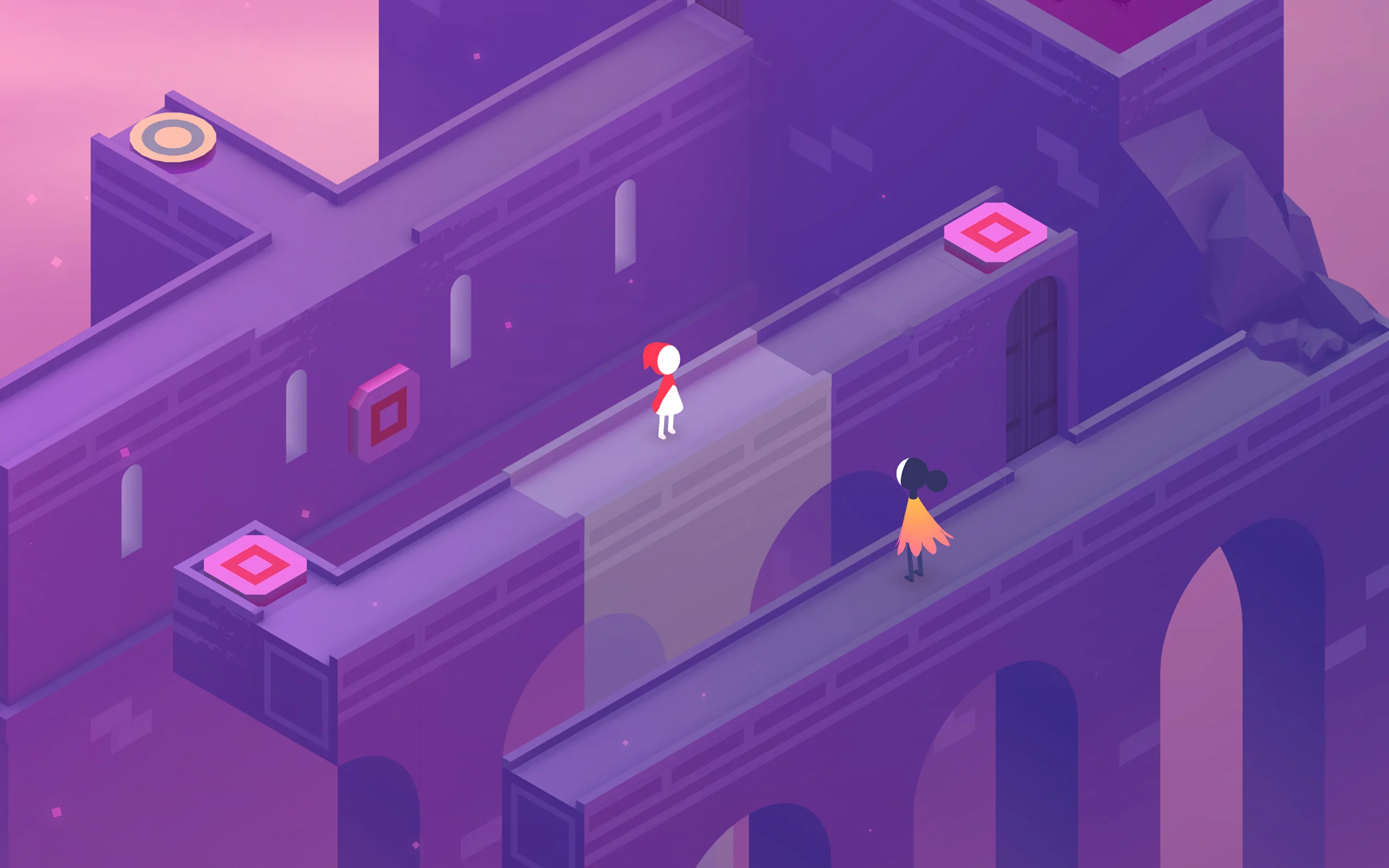
Monument Valley – the game featuring a faceless princess in a geometrically impossible world, on a mission to return sacred objects to their rightful place – was a phenomenon. Downloaded more than 30 million times, it won countless awards for audio, interaction, and design, and was named Apple’s iPad Game of the Year in 2014. But to its many fans’ dismay, its creators ustwo games kept insisting there were no plans for a sequel.
Until now. In May, three years after the launch of the original, Monument Valley II was unveiled at Apple’s WWDC event in California.
“I think most studios, because of the success of the first game, would have jumped straight into making a sequel,” says Dan Gray, head of studio at ustwo games. “But we needed to find another reason – just because it was successful wasn’t good enough.”
Instead, the team spent some time experimenting with virtual reality, and expanded, using the proceeds from the first Monument Valley to hire more staff.
“There were so many talented people hired off the back of Monument Valley, and they all came to the table with new ideas for what a second game could be,” Dan says. “Even though we never thought we were going to follow up with number two – I even said in a couple of interviews that we were never going to do it – the new developers had great new ideas for mechanics and levels, and we wanted to tell more stories that aren’t currently being told within games.”
I think most studios, after the success of the first game, would have jumped straight into making a sequel.
It’s the new narrative that really sets it apart from the first, and from any other game on the market
Given the stand-out success of the original, the pressure was on to ensure that Monument Valley II lived up to its predecessor. Although the game has a loyal fanbase, Ustwo faced criticism when they released new, paid-for levels to the original game in November 2014. Dan seems unphased when I mention this minor hiccup in the Monument Valley story, and is confident there’ll be no such criticism of this new instalment.
For the die-hard fan there’s plenty of well-worn delights to be found in the newest offering. The aesthetics feel familiar, the initial gameplay is much the same, and even the geometry of the opening level is identical to that of its predecessor. But it’s the new narrative that really sets it apart from the first, and from any other game on the market.
“Mothers are never really the star of the show when it comes to video games,” Dan says. “And even when they are present, they’re usually seen as something vulnerable, something to protect. We have lots of stories about fathers – the big military guy loses his daughter and he has to fight his way back to get her – but never the other way around.

Monument Valley II introduces us to Ro, another faceless, flute-playing character with no backstory to speak of, except that of her motherhood. Her child, both faceless and nameless, accompanies Ro on her adventures.
To say any more would spoil the experience of discovery for which Monument Valley is so renowned. Suffice to say the mother/child relationship evolves with the gameplay as the levels go by. But even within the game, the relationship remains universal and ambiguous, something that Dan hopes allows players to engage deeply with the narrative.
There are three different kinds of Monument Valley player, according to Dan. One has, “a base level of caring, they love it because it’s an audiovisual toy.” The second is, “interested in the goal of this game; they understand that the character is a princess who has to put something back.”
The third, “is the person who recognises the artwork on the architecture links back to the history of a whole civilisation. They care about that, they go onto the internet and hypothesise about what that might mean. The ambiguity of it all is something they revel in, and they tell other people what their own version of the story is.”
“The child doesn’t have a name in the game. The child is neither male or female. The child can be anything you want. In Monument Valley, Ida was literally a blank canvas for you to project your own story onto. It's the same with Monument Valley II.”
“You recognise the two characters and internally you’ve made it a story about a mother and a child, but you project what you believe that relationship to be onto the game. What we really hope is that it helps you reflect on your relationships in your own life. That doesn’t have to be from a parent to a child; it could be with a friend, it could be with a mentor, it could be with anyone.”
For a lot of people it’s the first time they’ve cared about the feeling of a story or the events of a game.
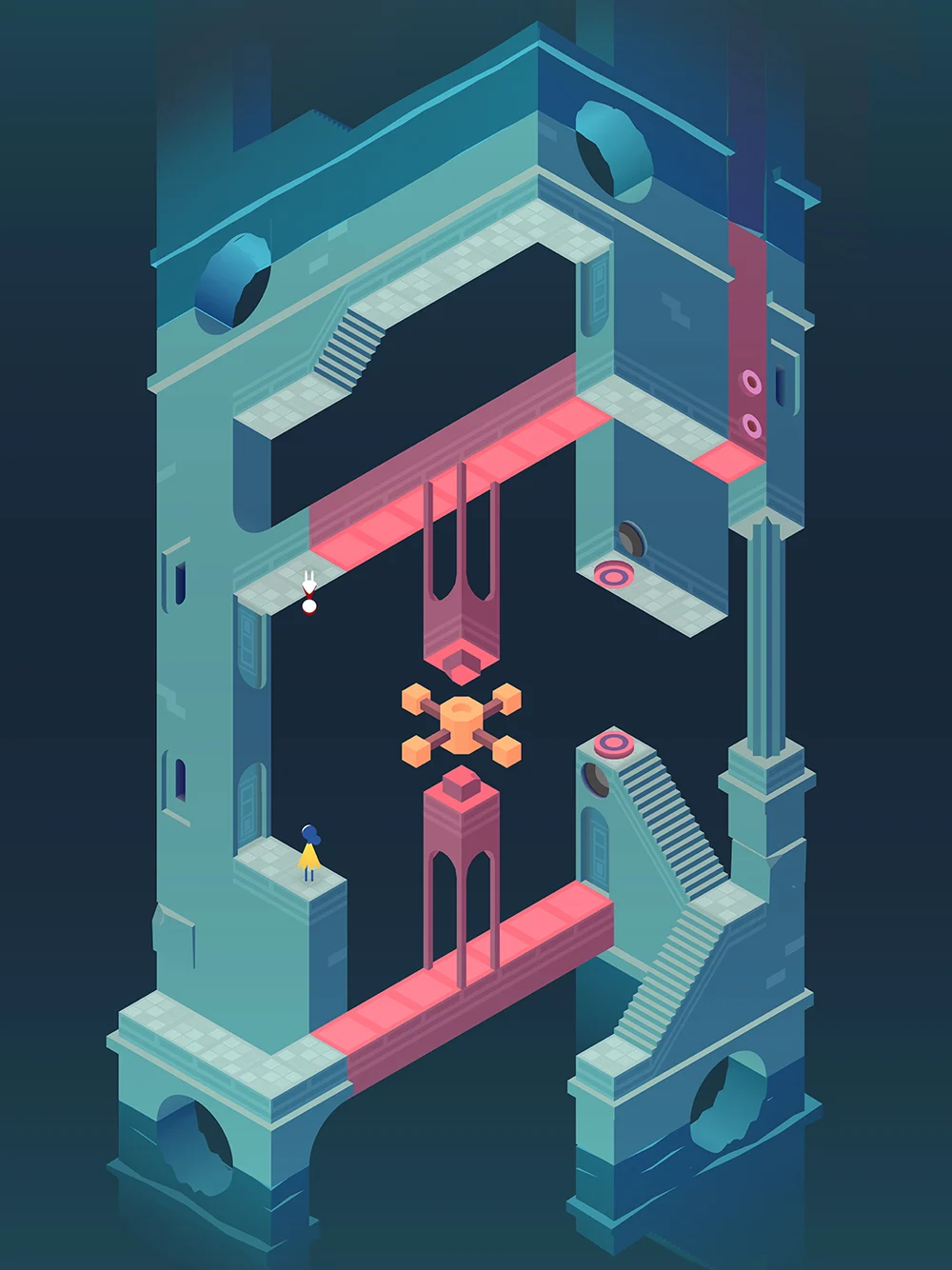
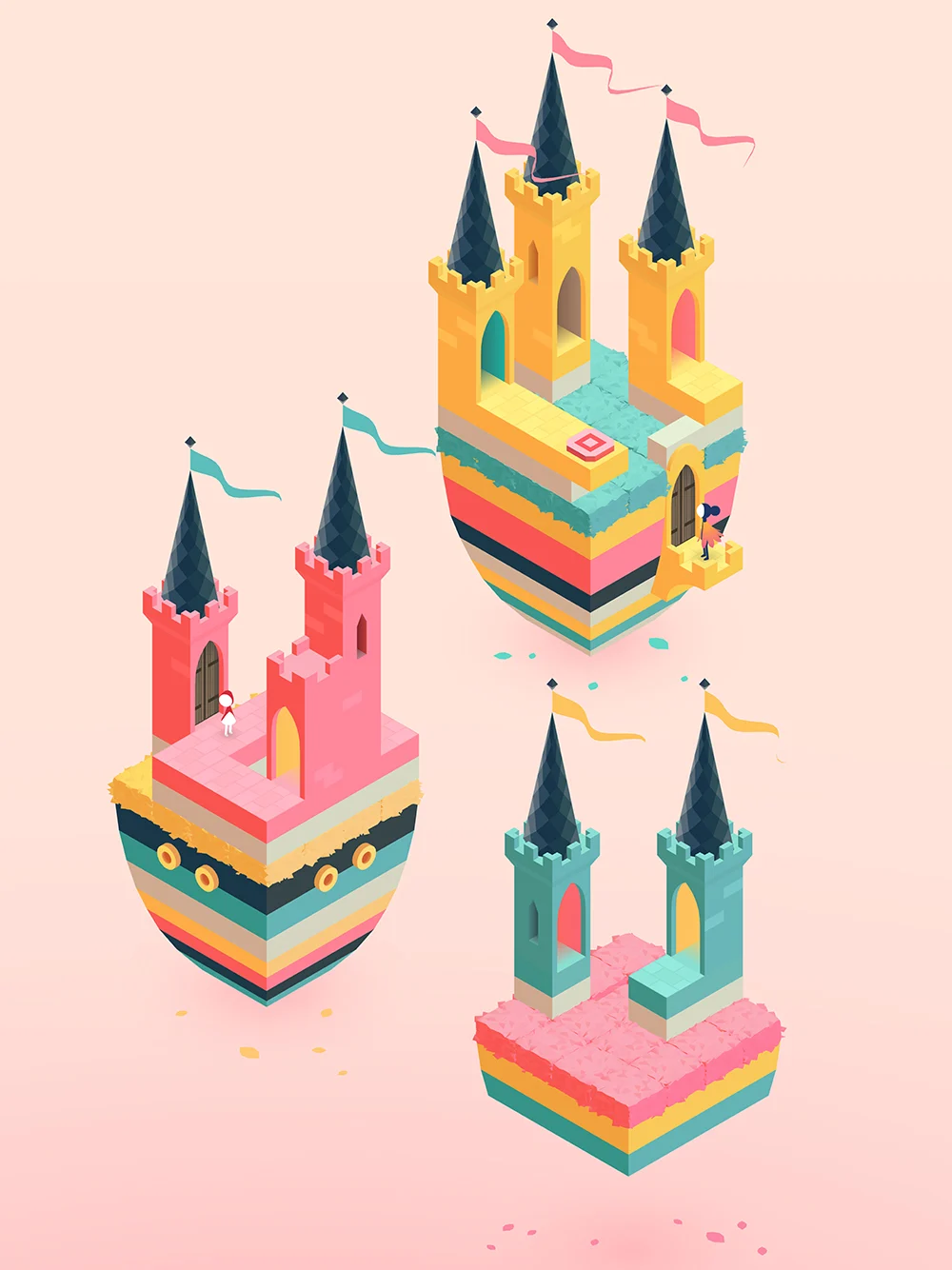
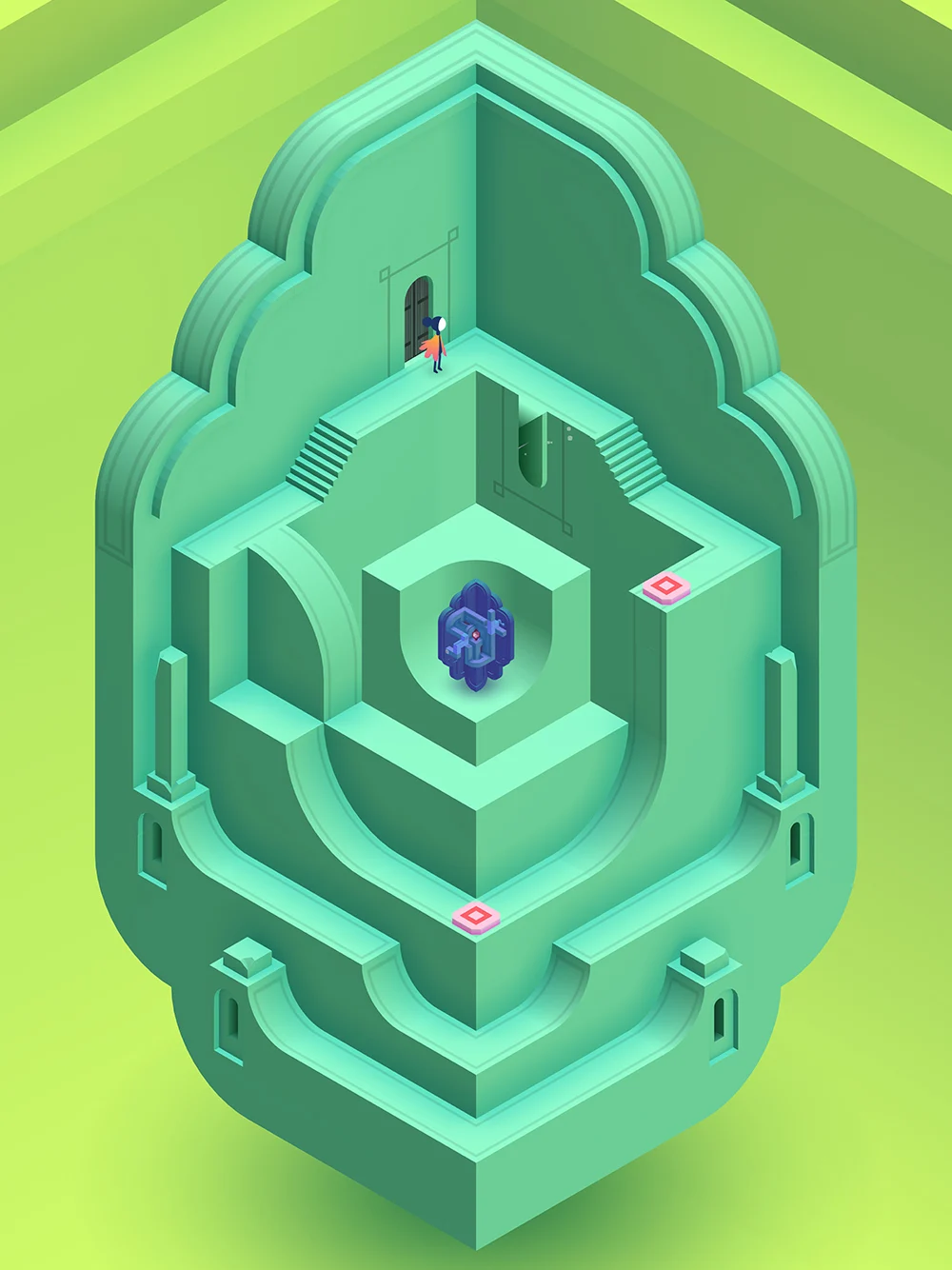
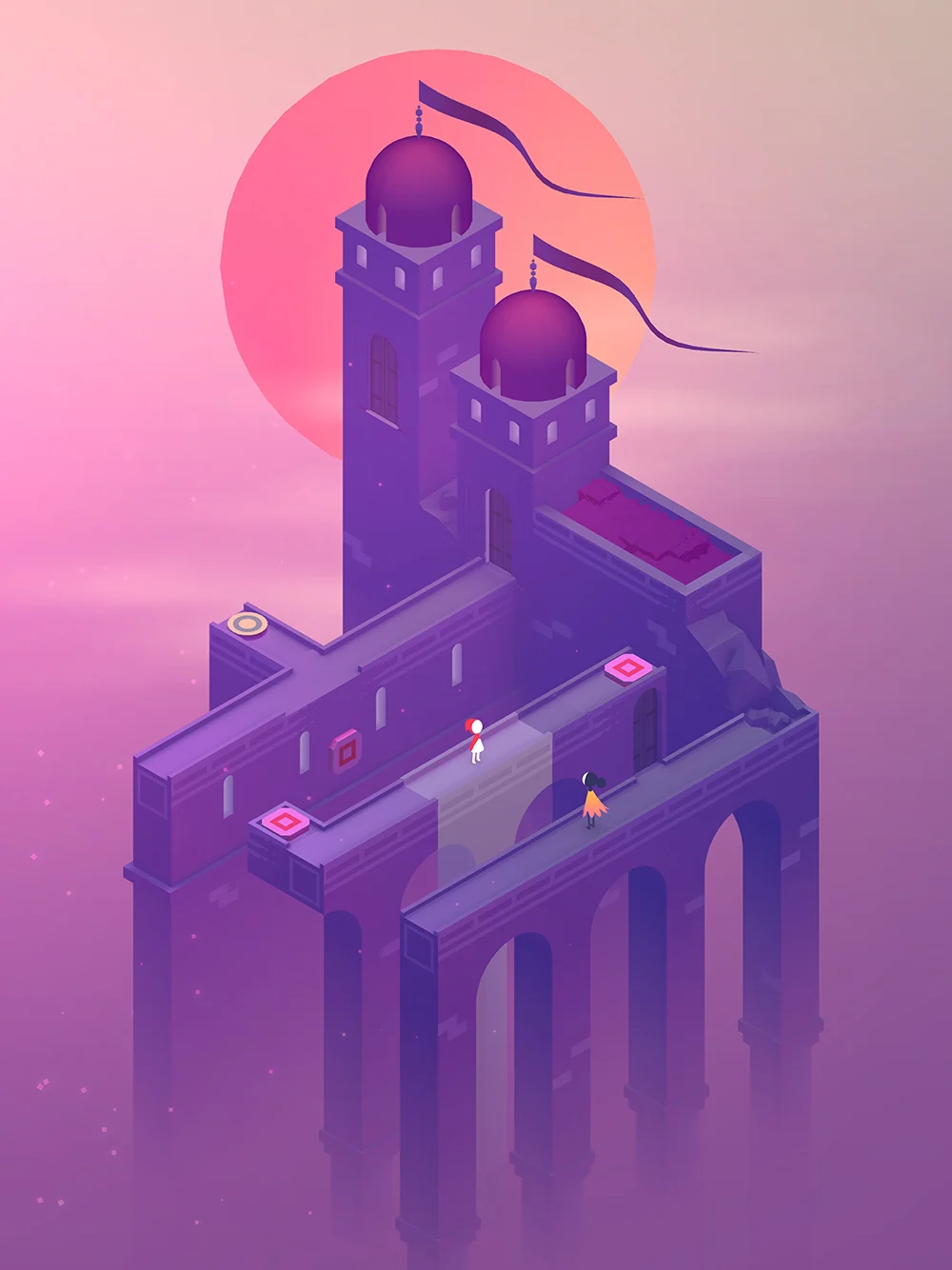
We always talk about trojan-horsing a storyline.
While this may seem like a big ask of a seemingly simple, one-person RPG designed to kill time on the daily commute, the Monument Valley team has expertise when it comes to eliciting an emotional response from the simplest of interactions. At its most basic, the first Monument Valley was just a geometric head-scratcher, but the evolution of Princess Ida’s storyline elevated the gameplay to something extraordinary. Monument Valley II refines and perfects balance of narrative and interaction.
“We always talk about trojan-horsing a storyline,” Dan says. “Lots of people come to our game and play it because they get sucked in by the screenshots. But because we’ve drawn them in, they then start to care. For a lot of people it’s the first time they’ve cared about the feeling of a story or the events of a game.”
Of course the preview screenshots are stunning, and it’s arguably a nicer-looking game than the first, but there is extraordinary depth to be found in the human interactions of Monument Valley II, exemplified by the evolution of the characters across the levels.
But if exploring the bonds between mother and child, or assessing various personal relationships seems like a stretch, Dan is confident there’s plenty of other elements for the casual gamer to enjoy.
“Monument Valley II is a very easy game to get through,” he says. “But you come back to it just to experience the world and all the audiovisual flourishes. That's where the value comes from. It’s always more about quality than length.”
Still, I’d wager you’ll be sharing fan theories on forums by the time you’ve reached level two.





